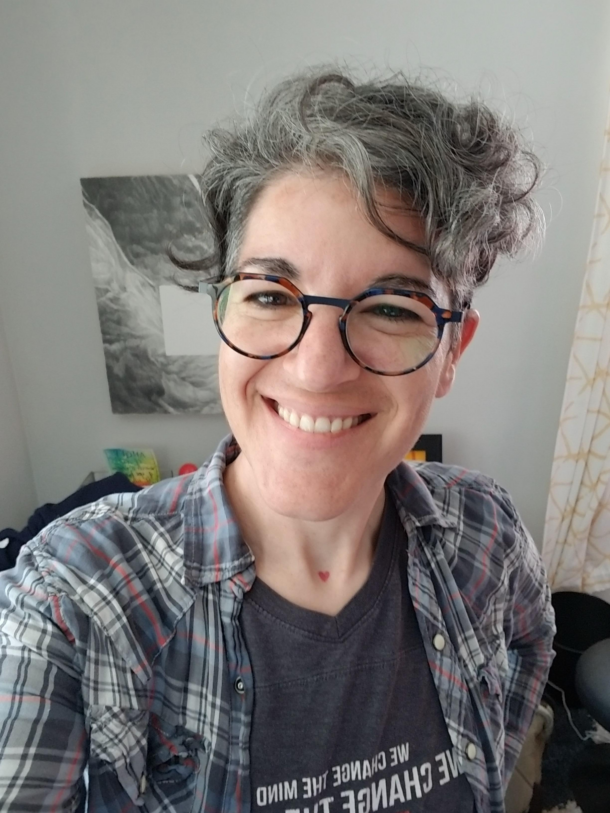There’s just no telling how many hundreds of people scurried this past week into the path of Hurricane Helene. With every coming natural disaster, it is the same: electrical line workers and internet technicians; doctors and nurses and the Red Cross; the small yet mighty crew of World Central Kitchen, all rush toward calamity.
As Mr. Roger’s mother so wisely advised him – look for the helpers – they are there.
I, however, was not.
On Tuesday, my mom and I flew out of dodge, not to avoid the storm but to join one of a different sort: that of early grief.
Wednesday, we sat at the graveside of the husband of my mom’s first cousin. We sat behind this cousin, who is much like a sister to my mom, and her two boys (who are actually men but always her boys), one on either side of her, the three of them linked, hands in hands, heads on shoulders, sons stepping into the roles of caregivers, supporter, pillars.
I haven’t been to many graveside services; perhaps all the ones I’ve been to have been for Jewish people. And so I don’t know if it is uniquely our tradition, a Jewish tradition, to shovel dirt onto the plain pine box that is also one of our traditions. Ashes to ashes, dust to dust, let no ornate casket or embalming or cement vault put this return asunder.
We were instructed, this time, not just to shovel but to first scoop with the backside of the shovel as a symbol of our reluctance to let the beloved go. Then, we were to turn the shovel over, scoop a proper scoop, as a symbol of our willingness to do so anyway.
We acknowledge our grief; we practice accepting its reality.
My dear friend Courtney, the one who transitioned into the great mystery earlier in this year, had started asking me a question in the last few years, returning to it each time I came to one of life’s impasses. “What do you need in order to find peace in this?”
It’s a question I’ve picked up and kept for myself since I lost the ability to receive it from her.
I’ve discovered that there’s actually only one answer when a hardship is hard enough to merit the question: Peace comes from allowing reality to be exactly what it is.
![]()
Sarah Hines, one of my fellow Grief Nook hosts and co-creators, defines legacy not by names on walls or offspring carrying DNA but, rather, by how we carry a person with us after they’ve gone. In the All Up in It she recorded with me, she described the legacy of her best friend, who died suddenly, as her family’s verbalization of love at every parting.
I didn’t know Carl well. What I knew of him was his radiant joy and his jokes that occasionally got too bawdy for the company he was in; for his love of bridge, which he taught widely after his career teaching math ended, and his adoration of his wife and their boys.
I see his legacy in how his older son parents his 7-year-old daughter with play and joy and boundaries. I see it in how his younger son cared for himself after the funeral. I saw it in the poem one of his many friends wrote immediately upon receiving the news of Carl’s death.
I hope that I will carry a little piece of him with me in his unwillingness – perhaps inability – to be anyone but exactly who he was.
![]()
My friend, Courtney, would have liked for us to all have moved on after her death, for those of us who love her be Teflon to the massive change that is adjusting to life without her embodied presence.
I don’t know where Carl would have stood on the “move on” directive, one that is so very common these days, one that is both ridiculous and inevitable at the same time.
That is: life confounds us in the midst of grief by moving on, by continuing on. Even then, we have to brush our teeth and pay our bills and obey traffic laws. Even then, when we might most wish for the world to pause its rotation and give us a moment to catch our breath.
Yet to play at stoicism at such times is to let grief be a loan shark, piling on interest with each day of delay. It might not break our legs when it comes to collect but it could well break far more.
If we are wise – and I am not always but I always endeavor to be – we would follow Courtney’s question to its inevitably conclusion and practice allowing reality to be what it is, moment by moment, day by day, be it numbness or joy at remembering or the kinds of heaving sobs that can make a person wonder if it is, in fact, possible to suffocate on one’s own tears.
And when it is not our grief to carry, not our shiva to sit, then we show up, not because we can do anything to lighten the load of the bereaved, but because simply being there is a reminder, “Even now, you are not alone, you are not alone, you are not alone…”
Wishing you loving presence with whatever you’re carrying.
